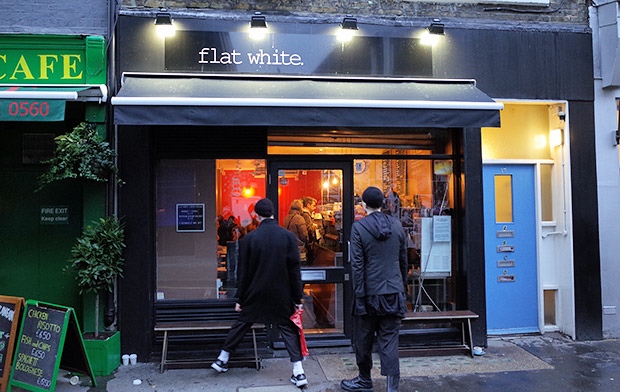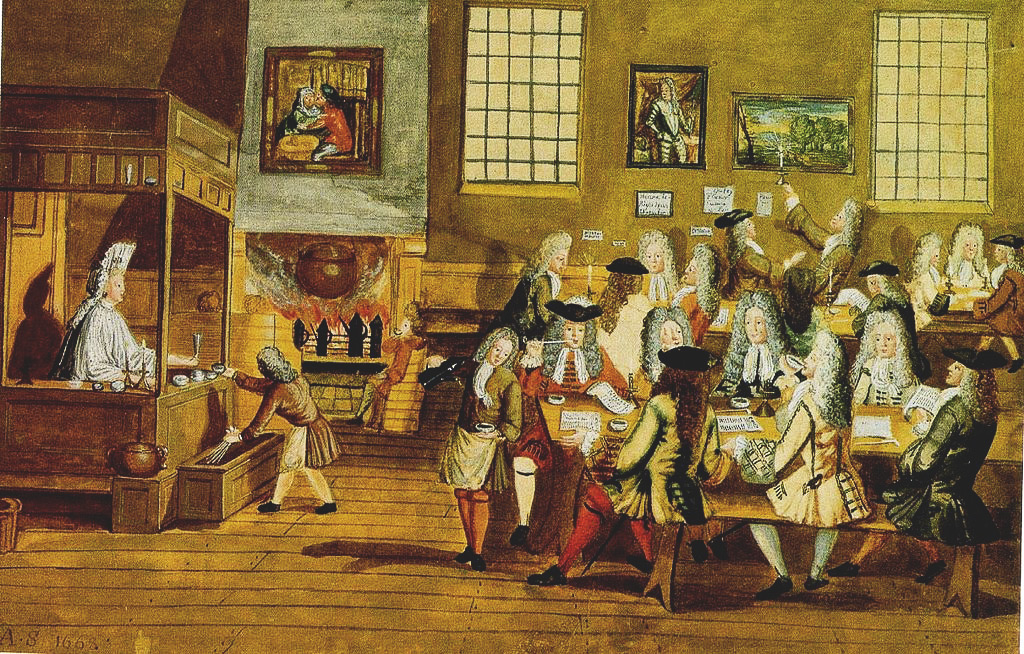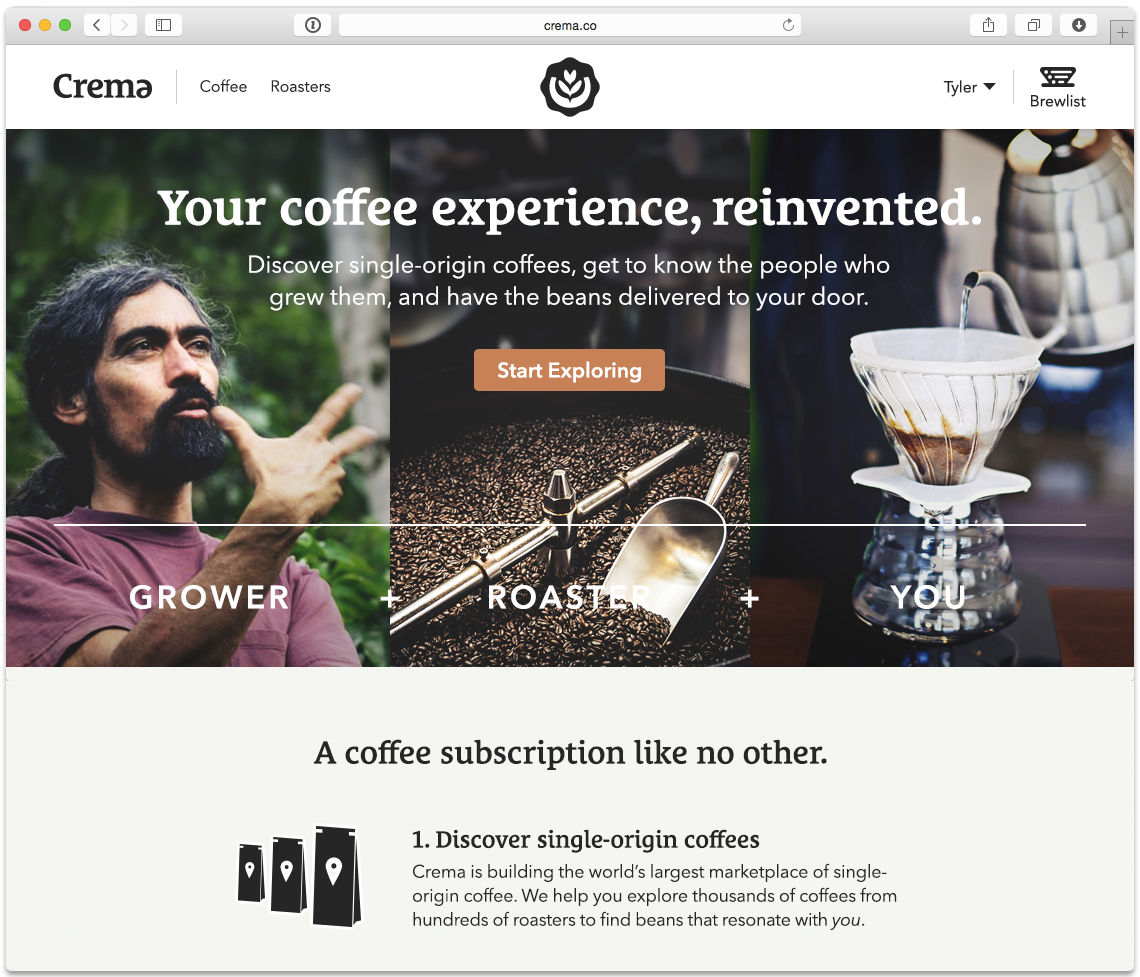Designers are problem solvers. They ask the question: “How can we make it easier and more enjoyable for people to achieve their goals?” They create prototypes, put them in front of users, and then iterate their design solutions until the experience matches the user’s needs and wants.
Often, designers are employed to create a new mobile application or make an existing website easier to use. But design thinking is also well suited for another, broader purpose: disruptive innovation. The ethos that makes designers effective at crafting experiences also equips them to become innovators.
The same approach, techniques, and values that make designers effective at crafting usable, enjoyable experiences—what we could call “design thinking”—also positions them to become innovators and entrepreneurs. To make the leap from designer to innovator, we simply need to think bigger.
What follows are personal observations I’ve made over the last four months as a designer turned founder of Crema.co, an online marketplace for single-origin coffee. I’ve noticed four design practices that, when broadened, are crucial to successful innovation: identifying a problem, formulating a solution, talking to customers, and iterating.
Identify a Problem
I like coffee. I enjoy the ritual of brewing freshly ground beans, of sipping coffee that’s been roasted just a few days before. I appreciate the unique flavor of an exceptional single-origin coffee that reflects all the nuances of its terroir.
But I dislike shopping for coffee. I’m disappointed by what I find on the grocery store shelves: ubiquitous blends roasted who-knows-how-long ago by household brands. Occasionally I pick up a bag of coffee from the local coffee shop, but it’s an extra trip and out of my way. Sometimes I order from a roaster online, but the shipping is expensive and roasters’ websites can be clunky. And, worst of all, sometimes I run out!
Photo by Gabe Rodriguez
Put simply: there is a pain point in my coffee experience. I’ve identified a source of friction in the process. And, because I’m passionate about coffee, I want to do something about it. By expanding our thinking, designers can pinpoint valuable problems that are worth solving.
By expanding our thinking, designers can pinpoint valuable problems that are worth solving
Designers tend to be quick to spot pain points. Either by observing the behavior of others, or by reflecting on their own experiences, designers have a sixth sense for clunky interactions and tedious processes. By expanding our thinking from the narrow context of an app to encompass the broader experience as a whole, designers can pinpoint the innovator’s raison d’être: a valuable problem that needs to be solved.
While having empathy for others is essential, identifying a pain point of your own will likely incite a stronger motivation to figure out a solution. “The easiest, most straightforward way to create a great product or service,” say Jason Fried and David Hansson in Rework, “is to make something you want to use. That lets you design what you know—and you’ll figure out immediately whether or not what you’re making is any good.”
Formulate a Solution
One morning a couple years ago I was sitting in a London coffee shop—Flat White on Berwick street—and glanced up at the blackboard behind the counter. It was describing their coffee of the week: “From Mateo Pérez’s farm Finca Divino Niño in El Salvador. Grown at 2,100 meters elevation. Bourbon varietal, harvested in May, dry processed. Tastes of citrus and plum, reminiscent of cherry cola and cream.”
That was a moment of inspiration. In that instant I thought, wouldn’t it be great if there was an online marketplace where I could explore coffees from around the world using all of coffee’s unique characteristics? Where I could buy coffee from small, specialty roasters and have it delivered to me?
Photo by urban75
The problem I’d previously identified—frustration with shopping for coffee–was answered with a potential solution: an online coffee marketplace. By shifting the realm of concern, designers can arrive at solutions that reimagine entire industries.
Designers are pros at coming up with ways to do things better. Once our realm of concern shifts from isolated artifacts to ecosystems at large—and we begin identifying systemic problems—we’re on the path towards solutions that have the potential to reimagine entire industries.
While coming up with a solution sometimes begins as a “eureka” moment, the initial solution must always shift and evolve. “The goal of a startup,” writes Eric Ries in The Lean Startup, “is to figure out the right thing to build—the thing customers want and will pay for—as quickly as possible.”
Talk to Customers
Once I had identified a pain point and thought of a potential solution, I started talking to everyone I met about it. I would ask people questions like:
- “How do you buy coffee today?”
- “What kind of coffee do you like?
- “How much coffee do you go through in a typical month?
- “How much do you usually spend on a bag of coffee?”
- “Have you ever purchased coffee online?”
While I pinpointed the original problem by reflecting on my own experience, each conversation I had with someone else gave me another point of reference. Each discussion validated (or invalidated) whether others experienced the same pain point that I did, and whether or not the solution I had in mind resonated with them.
Conversation at a 17th century London coffee house
User research is a pillar of design. Designers are ardent evangelists for conducting user interviews, scrutinizing how users interact with prototypes, and gathering quantitive data on user behavior. To become successful innovators, designers must extend these user-centered practices to even earlier in the process, way before the first prototype is even built.
“Simply put,” says Steve Blank in The Four Steps to the Epiphany, “a startup should focus on reaching a deep understanding of customers and their problems, their pains, and the jobs they need done.”
Iterate, Iterate, Iterate
As I began to talk with people about Crema.co, my initial solution evolved and matured as I gained more insight from each conversation. What began as an online store morphed into a coffee subscription service that’s something like a Netflix queue for coffee: customers add multiple coffees to their ‘brewlist’, set a delivery frequency (every month, every other week, etc.), and then receive the next item on their brewlist with each shipment.
Crema.co is an online marketplace for single-origin coffee
In fact, every activity I’ve carried out over the past four months has followed an iterative pattern—from designing the business model, to building the product prototype, to crafting our Kickstarter campaign. Every undertaking—big and small—has been characterized by iterative, feedback-informed problem solving.
Identify the problem. Formulate a solution. Gather feedback. Repeat. If you’re thinking that this sounds an awful lot like the user-centered design process, you’d be right. Innovation is, quite simply, design thinking writ-large: identify the problem, formulate a solution, gather feedback, repeat.
IDEO’s Tim Brown, a champion of innovation through design, describes design thinking as “a human-centered approach to innovation that draws from the designer’s toolkit to integrate the needs of people, the possibilities of technology, and the requirements for business success.”
In Conclusion
As empathetic problem solvers, designers are well equipped to innovate. But we must look beyond our computer screens and phones to see the forest for the trees.
Let’s apply design thinking to big problems. Along the way, we just might change the world.
Crema.co is currently running a Kickstarter campaign ending April 4, 2015.
Image of innovators drinking coffee courtesy Shutterstock.











